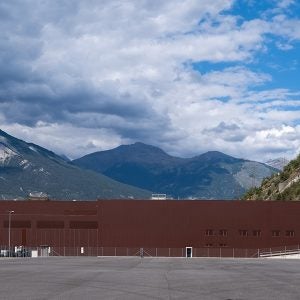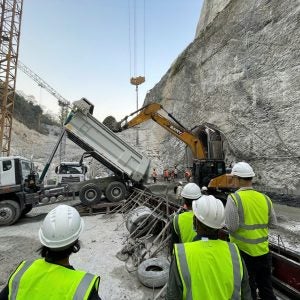Turbulent seepage in porous media, often rockfill dams, represents a classical topic. Easy estimation of the seepage flow characteristics facilitates the slope stability analysis of a dam. An analytical solution in two dimensions is revisited for turbulent seepage flow in homogenous isotropic rockfill dams on an impervious foundation and its derivation is simplified. The usefulness of the analytical approach is improved in that explicit expressions of the seepage point location in the downstream slope and the phreatic surface are worked out. The seepage discharge can be easily computed, although its accuracy relies on a good knowledge of the turbulent permeability. Laboratory experiments involving turbulent seepage in a 1.9m high rockfill dam were previously made in a flume at Vattenfall R&D, Sweden. The flow rate varied from 60 to 80 l/s/m. CFD computations in two dimensions are also performed with the commercial code FLUENT, where the dam in question is modelled as a porous medium and the phreatic surface is determined with a two-phase (water-air) model. Results from the analytical solution and CFD computations are compared with the experimental data, indicating that the agreement is generally good. CFD modelling gives better agreement with the experimental results. The analytical approach is useful when an approximate answer is needed quickly.






